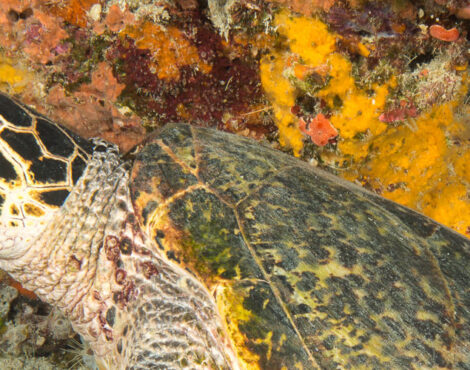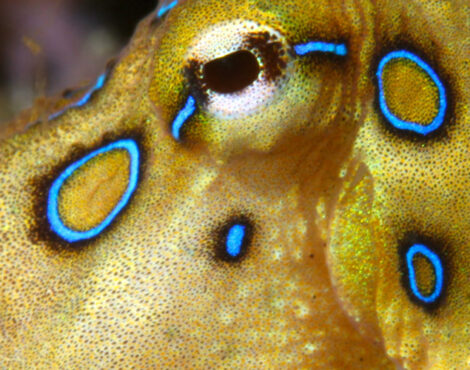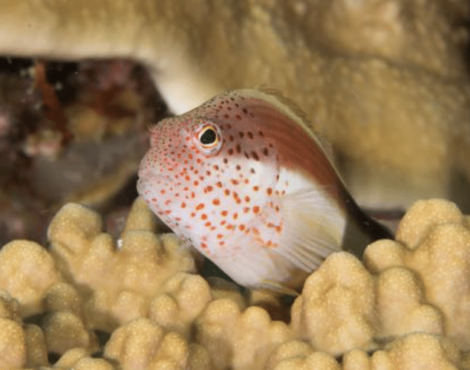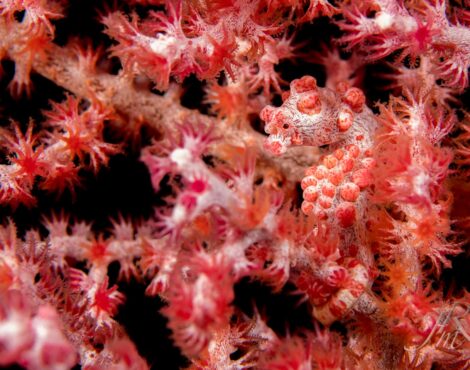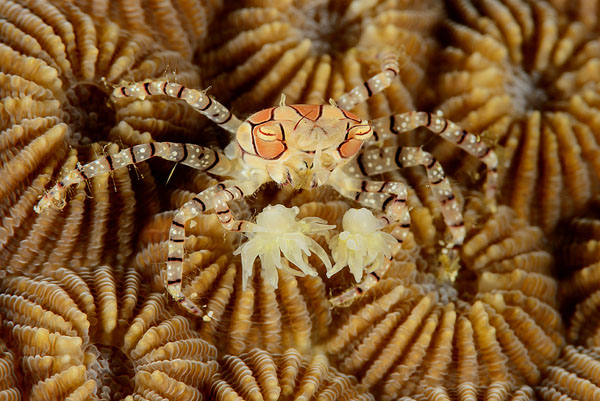
Bunaken Marine Park and the wider North Sulawesi areas is known around the world by avid divers for its marine biodiversity â especially the smaller critters that inhabit its walls and mucky slopes.
Macro photographers visit Bunaken Marine Park with specific targets on their photography bucket list. Generally, these âbucket listsâ are made up of the most colourful, most cryptic, or possibly the most interesting critters.
So today, we will talk about a creature that fits all three, the boxer crab.
What is a boxer crab?
Boxer crabs are a group of small crabs that belong to the genus Lybia, and the family Xanthidae.
In Bunaken marine park, boxer crab refers to the species, Lybia tessellata, although this is just one of ten known species.
They are known as the boxer crab (or frequently pom-pom crab) because they are often carrying small bits of anemone in each claw, which resemble boxing gloves or pom-poms.
What does a boxer crab look like?
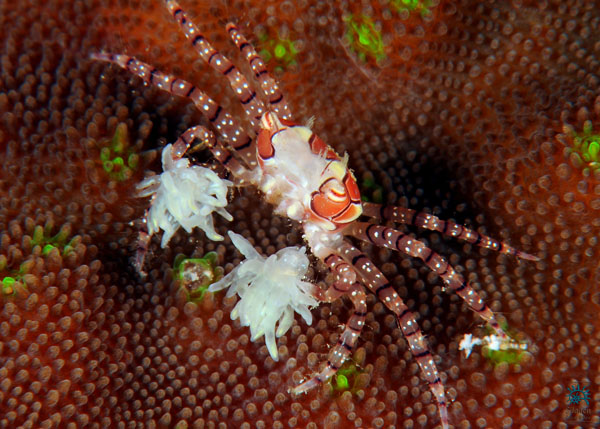
Boxer crabs are small, growing to a width of roughly 2.5 cm.
They are one of the more photogenic species of crab, with a colourful carapace (top shell) that has bright orange and light beige geometric patterns fringed with dark lines, somewhat resembling a stained glass window.
Their claws are much slimmer than that of other crabs in the Xanthidae family. The claws are long and thin, and have a fine finger with eight or nine spines, used for gripping rather than crushing.
Their legs are also long and thin, with beautiful dark bands, white spots, and very fine hairs.
The relationship between a boxer crab and its anemone.
Boxer crabs are best known for their symbiotic relationship with certain anemone species, usually Bunodeopsis spp or Triactis producta.
The crab will (usually but not always, should it lose one or both) hold a small piece of anemone in each claw, which it will wave above itself as it roams the seabed in search of food. These anemones are well armed with powerful stinging cells, so if a predator should come too close, the boxer crab will take a swing and try to sting it. Should the crab lose one of the anemones, it can cut the other in half, and both halves will grow back to size.
Both the crab and the anemone benefit from this relationship. The anemone does not need to be attached to the substrate to survive, so once it is with the boxer crab, it no longer needs to wait for food to come to it â the crab will bring it to its food.
Although this relationship is beneficial to both parties involved, neither species require one another for survival.
What does a boxer crab eat?
Boxer crabs are omnivores, meaning they live off a diet of both plant and animal based food, although they do seem to prefer animal based food. They are also scavengers, so rather than using the anemones to hunt, they are used for defence and scavenging the seabed.
Although they do not hunt with the anemones, they are very useful for feeding. They will effectively use them as mops, using them to gather up and debris left on the seabed. Both the crab and anemone will then tuck into whatever is found.
Where can I see a boxer crab?
Boxer crabs are active both during the day and night, although we seem to have better success finding then during night dives.
They tend to live in rubble areas, so the best places to find them is on some of our muck diving sites on the North Sulawesi mainland, such as Bolung or Tiwoho. We also often have luck on sloping reefs with large rubble patches, such as Lekuan III or Alung Banua.
Although boxer crabs are not particularly rare, they are very small, and can be difficult to spot. If you would like to see one, the best thing is to mention this to your guide, so they can give extra attention to searching around the rubble fields where the crabs are usually found.


